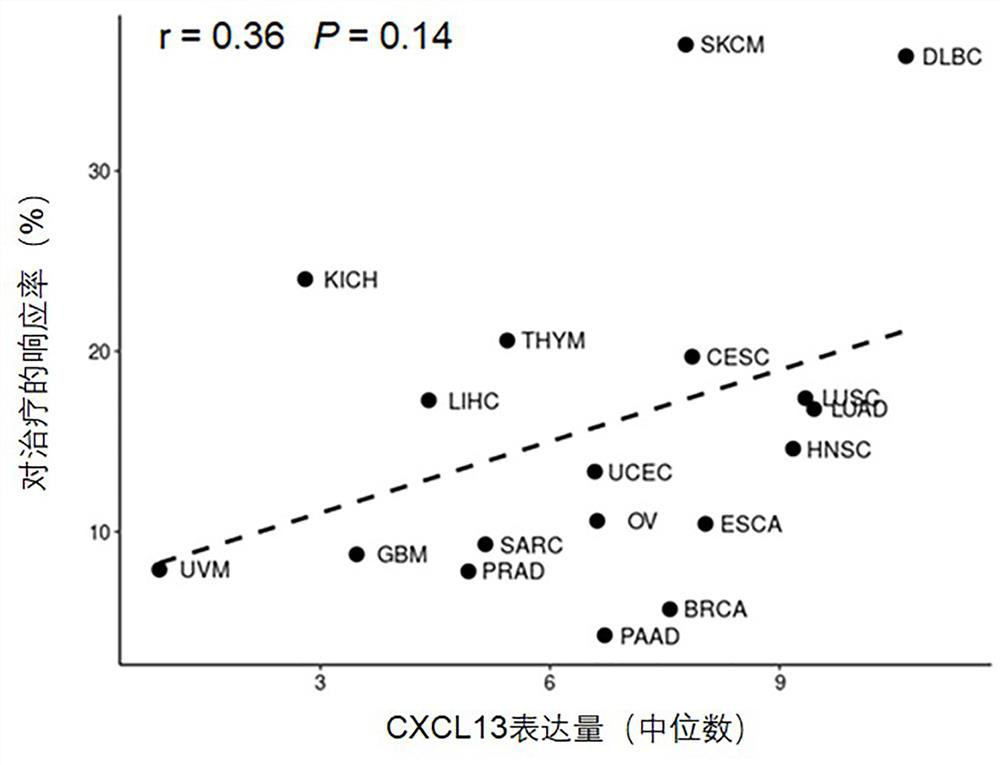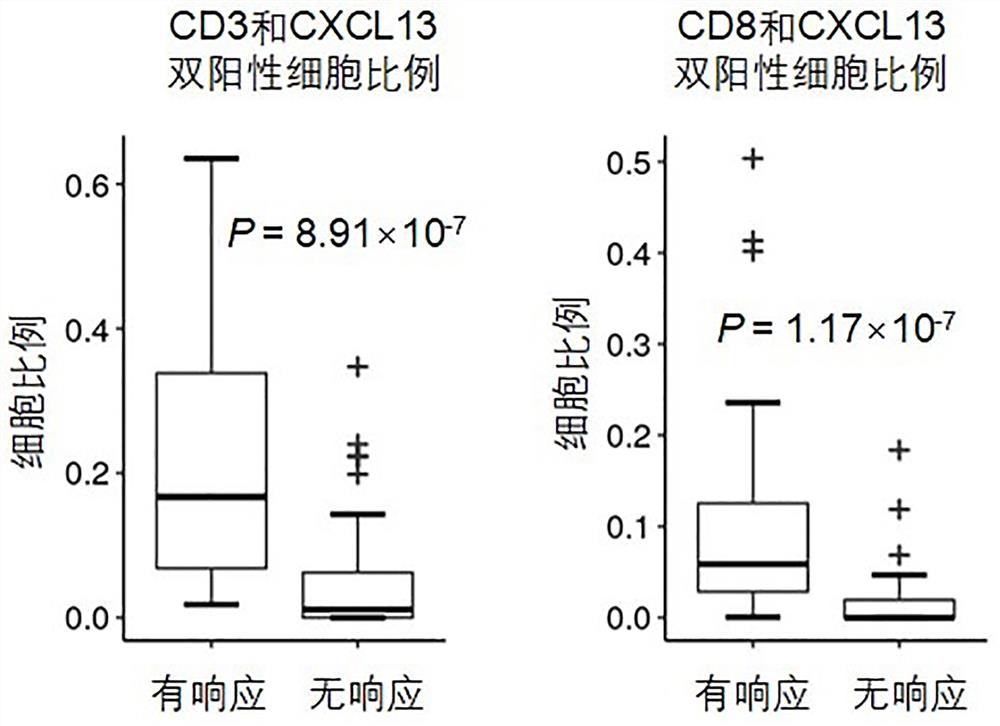A device for predicting the therapeutic effect of immune checkpoint blockade therapy and its application
A technology for immune checkpoints and treatment effects, which is applied in the directions of measuring devices, microbial measurement/inspection, disease diagnosis, etc., can solve problems such as unsatisfactory prediction effects, and achieve the effects of simple operation, good correlation and strong applicability
- Summary
- Abstract
- Description
- Claims
- Application Information
AI Technical Summary
Problems solved by technology
Method used
Image
Examples
Embodiment 1
[0073] This example verifies the correlation between the expression of a single gene of CXCL13 and the response rate of immunotherapy.
[0074] The gene expression data from 18 cancer types in the TCGA database were analyzed, and the results were as follows: figure 1 shown. It can be seen from the figure that the gene expression of CXCL13 in cancer samples (horizontal axis) is poorly correlated with the response rate of the cancer type to immunotherapy (vertical axis). The P value was 0.14, indicating that the gene expression of CXCL13 was not significantly correlated with the response rate of immunotherapy at the pan-cancer level, indicating that the expression of a single gene of CXCL13 is a poor predictor.
Embodiment 2
[0076] This example verifies the correlation between the proportion of CD3 and CXCL13 double positive cells in CD3 T cells or the proportion of CD8 and CXCL13 double positive cells in CD8 T cells and the response rate of immunotherapy.
[0077] From 13 cancer types (including breast cancer, esophageal cancer, liver cancer, lung squamous cell carcinoma, lung adenocarcinoma, melanoma, MSI colorectal cancer, MSS colorectal cancer, nasopharyngeal cancer, ovarian cancer, pancreatic cancer, kidney cancer and Endometrial cancer), each cancer type contains tumor samples from multiple patients. Calculate the median of CD3 and CXCL13 double positive cells in CD3 T cells or CD8 and CXCL13 double positive cells in CD8 T cells for each cancer type in multiple tumor samples, and compare the cancer type The response rate of the reported immune checkpoint blockade therapy was compared, and the results were as follows: figure 2 shown.
[0078] It can be seen from the figure that the proport...
Embodiment 3
[0080] In this example, the proportion of CD3 and CXCL13 double positive cells in CD3 T cells or the proportion of CD8 and CXCL13 double positive cells in CD8 T cells is used as the basis to predict the response of samples to immunotherapy, and the accuracy of the prediction Sex is tested.
[0081] Collect single-cell transcriptome datasets from 9 immune checkpoint blockade therapies in 5 cancers, including non-small cell lung cancer (NSCLC), breast cancer (Breast cancer), basal cell carcinoma (BCC), squamous cell carcinoma ( SCC) and renal cell carcinoma (Renal cell carcinoma), these data contain 229 samples from 103 patients before and after treatment. Combining data from multiple cancer types revealed the proportion of CD3 and CXCL13 double positive cells among CD3 T cells and the proportion of CD8 and CXCL13 double positive cells among CD8 T cells in pretreatment tumor samples from patients who responded to treatment. significantly higher than non-responding patients (e.g...
PUM
 Login to View More
Login to View More Abstract
Description
Claims
Application Information
 Login to View More
Login to View More - R&D
- Intellectual Property
- Life Sciences
- Materials
- Tech Scout
- Unparalleled Data Quality
- Higher Quality Content
- 60% Fewer Hallucinations
Browse by: Latest US Patents, China's latest patents, Technical Efficacy Thesaurus, Application Domain, Technology Topic, Popular Technical Reports.
© 2025 PatSnap. All rights reserved.Legal|Privacy policy|Modern Slavery Act Transparency Statement|Sitemap|About US| Contact US: help@patsnap.com



